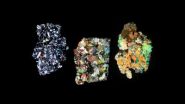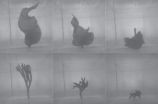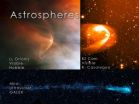(Press-News.org) TEMPE, Ariz. – New findings from NASA's Dawn spacecraft lay the groundwork for the first geological overview of asteroid (4)Vesta and confirm the existence of not one but two giant impact basins in its southern hemisphere. The findings, published today in a set of Science papers, will help scientists better understand the early solar system and processes that occurred as it formed and evolved.
The Dawn spacecraft, orbiting asteroid Vesta since July 2011, has already acquired several thousand images of the asteroid's surface, revealing a complex landscape. The images provide many details that help scientists to understand how the surface has evolved since its formation.
The first paper provides an overview of the true complexity of this ancient world. Vesta is not just a ball of rock; its surface is dominated by abundant impact craters of all shapes and sizes, from small fresh craters to giant basins as seen in the southern hemisphere. The surface of Vesta is complex and varied, with preserved ejecta blankets clinging to some craters, large troughs extending around the equatorial region, enormous mountains, and unevenly distributed enigmatic dark material, but as yet an absence of volcanic features.
"As a volcanologist, and as one who expected to find evidence of volcanism on Vesta based on what we knew from the Howardite–Eucrite–Diogenite (HED) meteorites and prior models of Vesta's formation, the biggest surprise for me was the absence of any evidence of volcanic features. Vesta's surface has been so heavily modified by impact cratering that any evidence of its early volcanic activity has been destroyed," says Dawn mission participating scientist David Williams, co-author on the papers and faculty research associate in Arizona State University's School of Earth and Space Exploration.
The present lack of volcanic features detected on Vesta suggests that volcanism was only active during the short period of rapid cooling of Vesta's interior within the first 100 million years after formation, and that the surface has been eroded by impacts over time.
Like Earth and other terrestrial planets, Vesta has ancient basaltic materials in its crust and a large iron core. It is an irregular asteroid that also has tectonic features, troughs, ridges, cliffs, hills and a giant mountain. But comparisons of the slopes and topography of Vesta show that they are intermediate between planets and small asteroids, underscoring Vesta's unique role as a transitional solar system body.
Prior to the arrival of the Dawn spacecraft, some Vestan surface features had already been resolved using the Hubble Space Telescope and ground-based telescopes. The most prominent of these surface features is an enormous crater Dawn found to be about 500 kilometers (310 miles) in diameter, centered near the south pole, named Rheasilvia after the mother of Romulus and Remus. Its width is 90 percent the diameter of Vesta and it is estimated that the impact responsible excavated about 1 percent of the volume of Vesta.
The second paper is a geological description of this large impact basin.
"Dawn observations enabled us to recognize that there are actually TWO large basins at the south pole, an older one named "Veneneia" and a younger one named "Rheasilvia"," explains Williams.
The Rheasilvia basin dominates the geology of Vesta, as the basin itself and its impact ejecta cover most of the southern hemisphere. The center of Rheasilvia has a central peak taller than Mt. Everest or Mauna Loa on Earth, similar in height to Olympus Mons on Mars. This basin appears to have excavated into the mantle of Vesta, exposing material spectrally similar to diogenite meteorites; Vesta's crust is spectrally similar to eucrite and howardite meteorites, thus confirming that Vesta and its family of asteroids are the source of the howardite-eucrite-diogenite (HED) family of basaltic achondrite meteorites.
"For most planets and moons we see the pictures first, then have samples collected later to confirm our geologic interpretations. In the case of Vesta, thanks to the HED meteorites, we have the samples first, and must try to relate them to our emerging geologic picture of Vesta from the Dawn mission," said Williams.
INFORMATION:
Dawn reveals complexities of ancient asteroidal world
2012-05-11
ELSE PRESS RELEASES FROM THIS DATE:
Patients see benefits and risks to direct-to-consumer genetics tests
2012-05-11
MAYWOOD, Ill. – Patients see potential benefits from direct-to-consumer genetic testing, but are also concerned about how test results will be used, and generally are unwilling to pay more than $10 or $20 for them, according to focus groups conducted by researchers at Loyola University Chicago Stritch School of Medicine.
Findings by first author Katherine Wasson, PhD, MPH, and colleagues are published in the American Journal of Bioethics Primary Research. Wasson, an assistant professor in Loyola's Neiswanger Institute for Bioethics and Health Policy, is an expert on the ...
New research on seaweeds shows it takes more than being flexible to survive crashing waves
2012-05-11
Seaweeds are important foundational species that are vital both as food and habitat to many aquatic and terrestrial shore organisms. Yet seaweeds that cling to rocky shores are continually at risk of being broken or dislodged from their holds by crashing waves with large hydrodynamic forces. So how do such seaweeds survive in intertidal zones? Do they have special properties that make them extremely flexible or particularly strong?
Patrick Martone (University of British Columbia) has spent a considerable amount of time standing on the shore watching big waves crash ...
You're beautiful, Vesta
2012-05-11
When UCLA's Christopher T. Russell looks at the images of the protoplanet Vesta produced by NASA's Dawn mission, he talks about beauty as much as he talks about science.
"Vesta looks like a little planet. It has a beautiful surface, much more varied and diverse than we expected," said Russell, a professor in UCLA's Department of Earth and Space Sciences and the Dawn mission's principal investigator. "We knew Vesta's surface had some variation in color, but we did not expect the diversity that we see or the clarity of the colors and textures, or their distinct boundaries. ...
A push from the Mississippi kept Deepwater Horizon oil slick off shore, Penn research shows
2012-05-11
PHILADELPHIA — When the Deepwater Horizon drilling rig exploded April 20, 2010, residents feared that their Gulf of Mexico shores would be inundated with oil. And while many wetland habitats and wildlife were oiled during the three-month leak, the environmental damage to coastal Louisiana was less than many expected, in part because much of the crude never made it to the coast.
Research by a trio of geoscientists, including the University of Pennsylvania's Douglas Jerolmack, now offers an explanation for why some of the oil stayed out at sea. Using publicly available ...
NASA's IBEX reveals a missing boundary at the edge of the solar system
2012-05-11
For the last few decades, space scientists have generally accepted that the bubble of gas and magnetic fields generated by the sun – known as the heliosphere – moves through space, creating three distinct boundary layers that culminate in an outermost bow shock. This shock is similar to the sonic boom created ahead of a supersonic jet. Earth itself certainly has one of these bow shocks on the sunward side of its magnetic environment, as do most other planets and many stars. A collection of new data from NASA's Interstellar Boundary Explorer (IBEX), however, now indicate ...
First forecast calls for mild Amazon fire season in 2012
2012-05-11
Forests in the Amazon Basin are expected to be less vulnerable to wildfires this year, according to the first forecast from a new fire severity model developed by university and NASA researchers.
Fire season across most of the Amazon rain forest typically begins in May, peaks in September and ends in January. The new model, which forecasts the fire season's severity from three to nine months in advance, calls for an average or below-average fire season this year within 10 regions spanning three countries: Bolivia, Brazil and Peru.
"Tests of the model suggested that ...
HPV vaccine completion rate among girls is poor, getting worse
2012-05-08
GALVESTON, Texas – April 30, 2012 – The proportion of insured girls and young women completing the human papillomavirus (HPV) vaccine among those who initiated the series has dropped significantly – as much as 63 percent – since the vaccine was approved in 2006, according to new research from the University of Texas Medical Branch (UTMB) in Galveston.
The study, published in the current issue of Cancer, reveals the steepest decline in vaccine completion among girls and young women aged nine to 18 – the age group that derives the greatest benefit from the vaccine, which ...
Higher risk of birth defects from assisted reproduction
2012-05-08
VIDEO:
Associate professor Michael Davies (Robinson Institute, University of Adelaide) discusses the findings of a study into the risk of major birth defects associated with assisted reproductive technologies.
Click here for more information.
A University of Adelaide study has identified the risk of major birth defects associated with different types of assisted reproductive technology.
In the most comprehensive study of its kind in the world, researchers from the University's ...
GPS on commercial ships could improve tsunami warnings
2012-05-08
Commercial ships travel across most of the globe and could provide better warnings for potentially deadly tsunamis, according to a study published May 5 by scientists at the University of Hawaii – Manoa (UHM) and the National Oceanic and Atmospheric Administration's Pacific Tsunami Warning Center.
James Foster, lead author and Assistant Researcher at the UH School of Ocean and Earth Science and Technology (SOEST), and colleagues were able to detect and measure the properties of the tsunami generated by the magnitude 8.8 earthquake in Maule, Chile (February 2010), even ...
US Army examines why some soldiers avoid PTSD care, strategies to keep them in treatment
2012-05-08
PHILADELPHIA, May 5, 2012 – U.S. Army researcher Maj. Gary H. Wynn, M.D., shared new analysis on why some Soldiers suffering from combat-related post-traumatic stress disorder (PTSD) never seek care or drop out of treatment early during a presentation today at the American Psychiatric Association's annual meeting. His presentation, "Epidemiology of Combat-Related PTSD in U.S. Service Members: Lessons Learned," also described the approaches the Army is using to address this issue and improve overall patient outcomes.
Currently, fewer than half of the Soldiers who report ...




